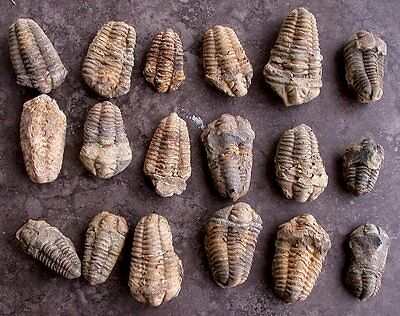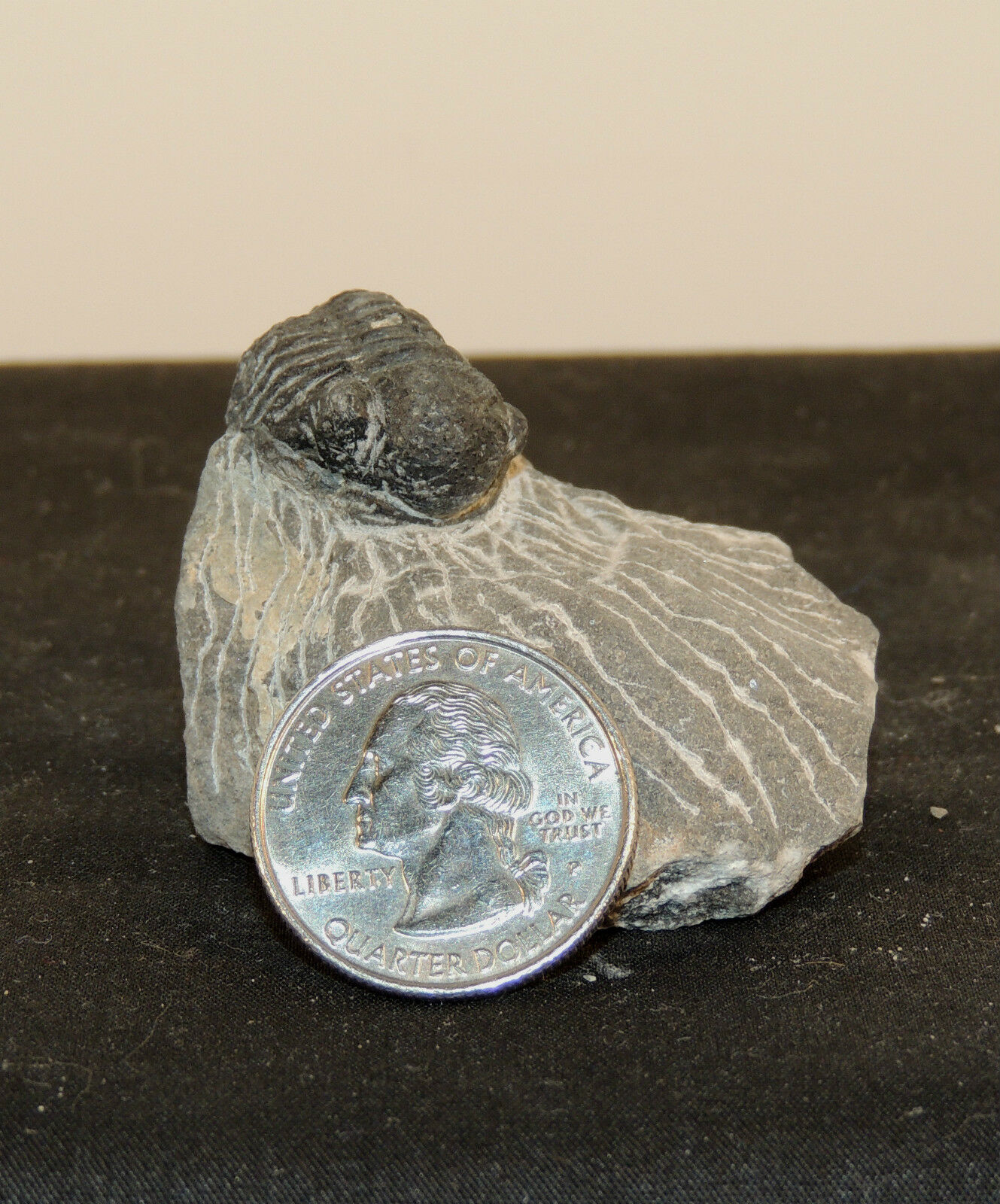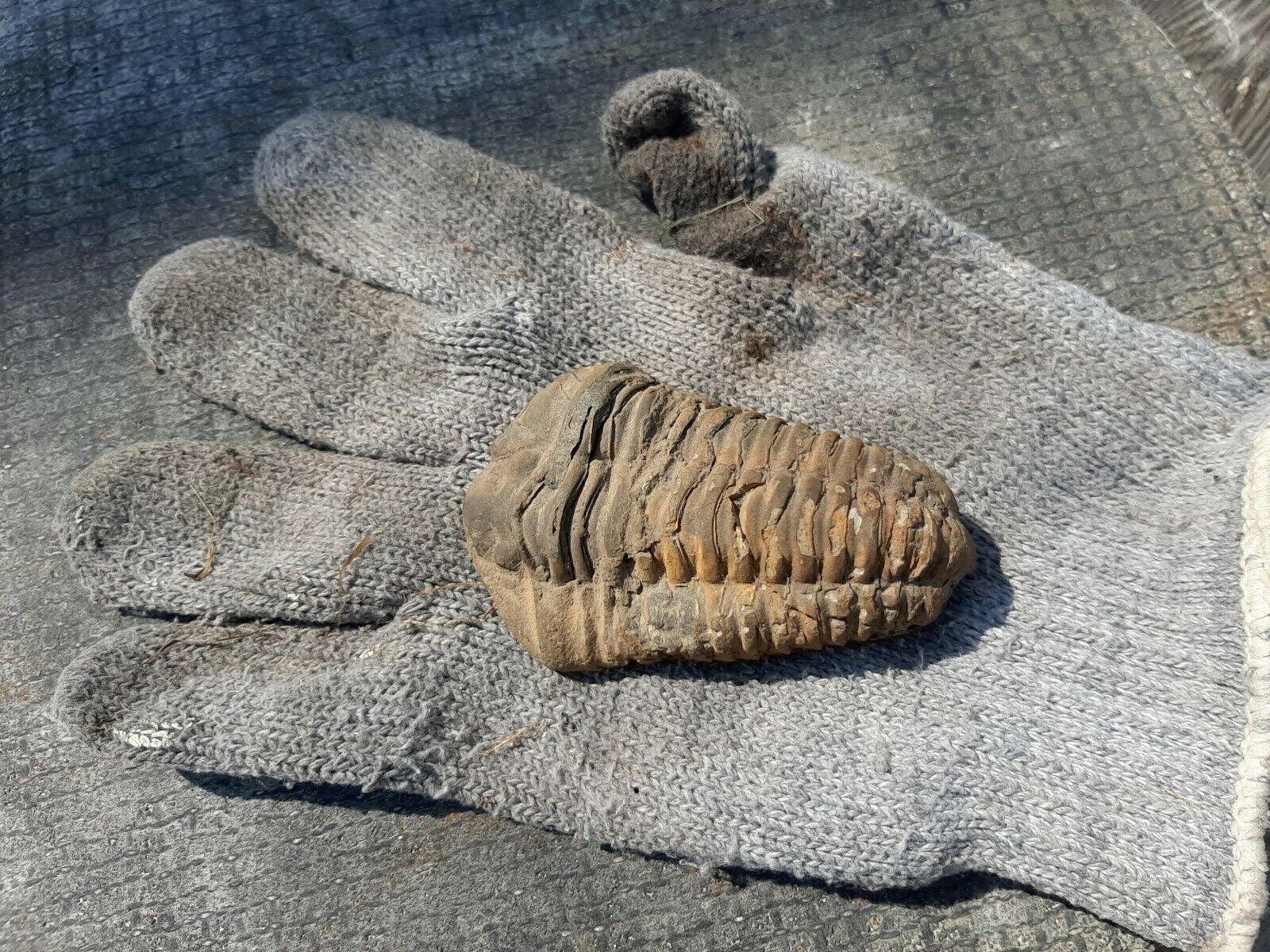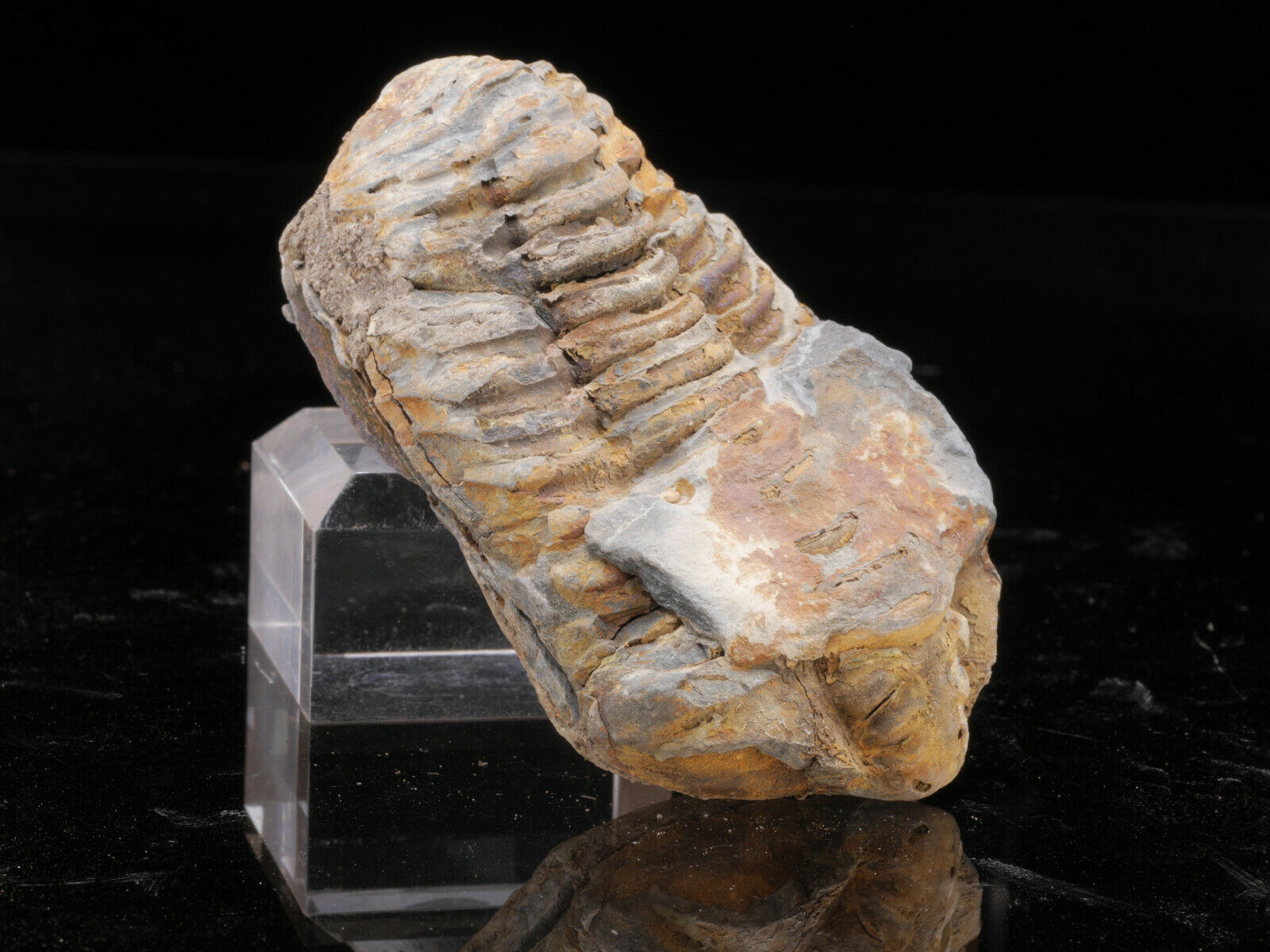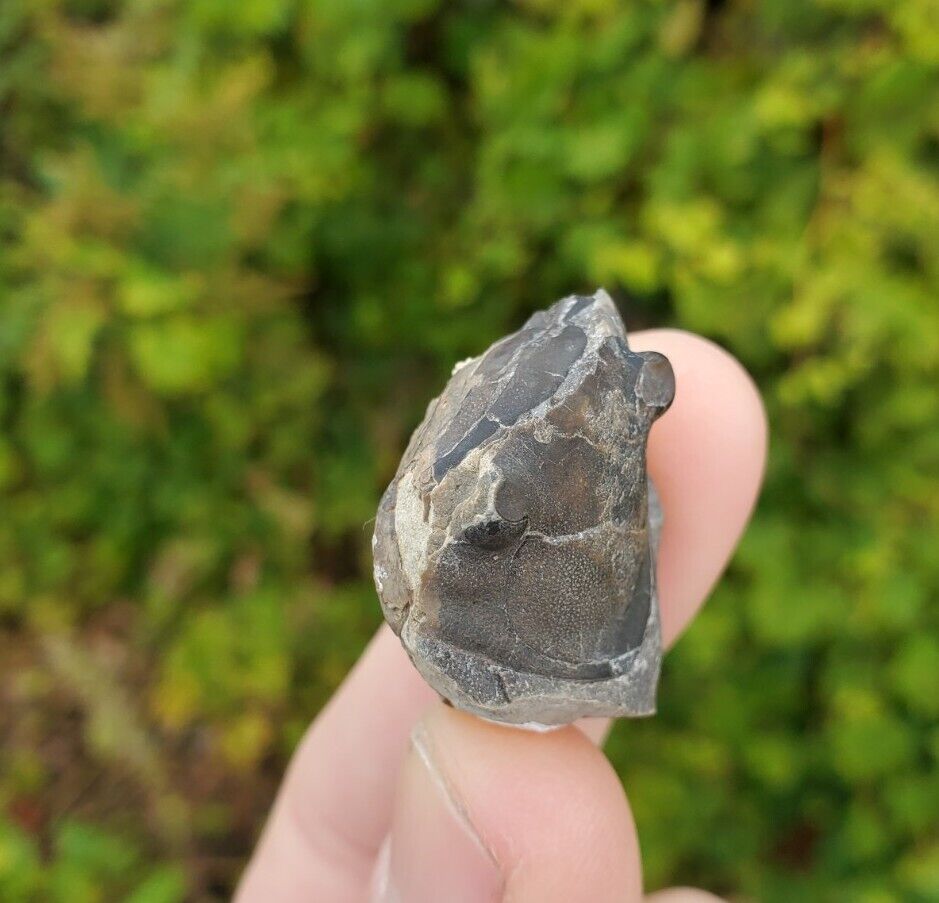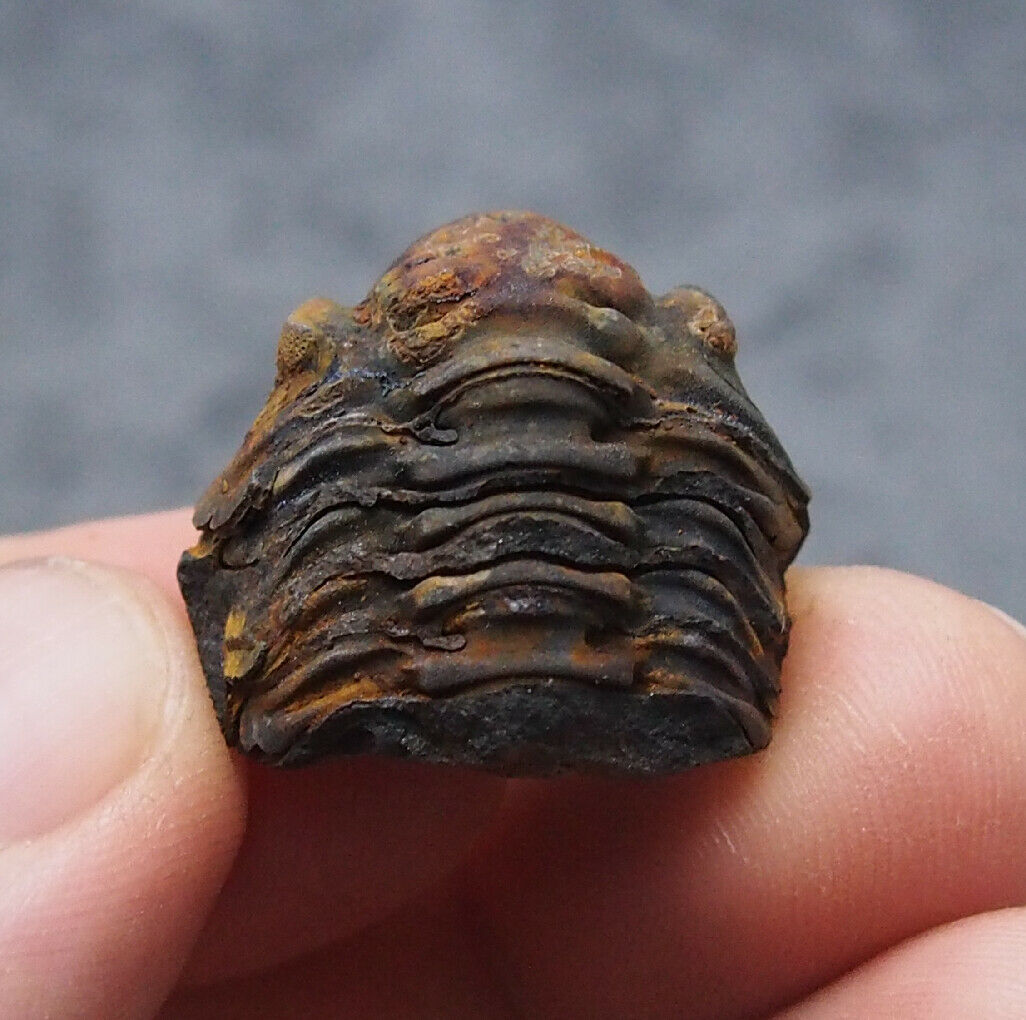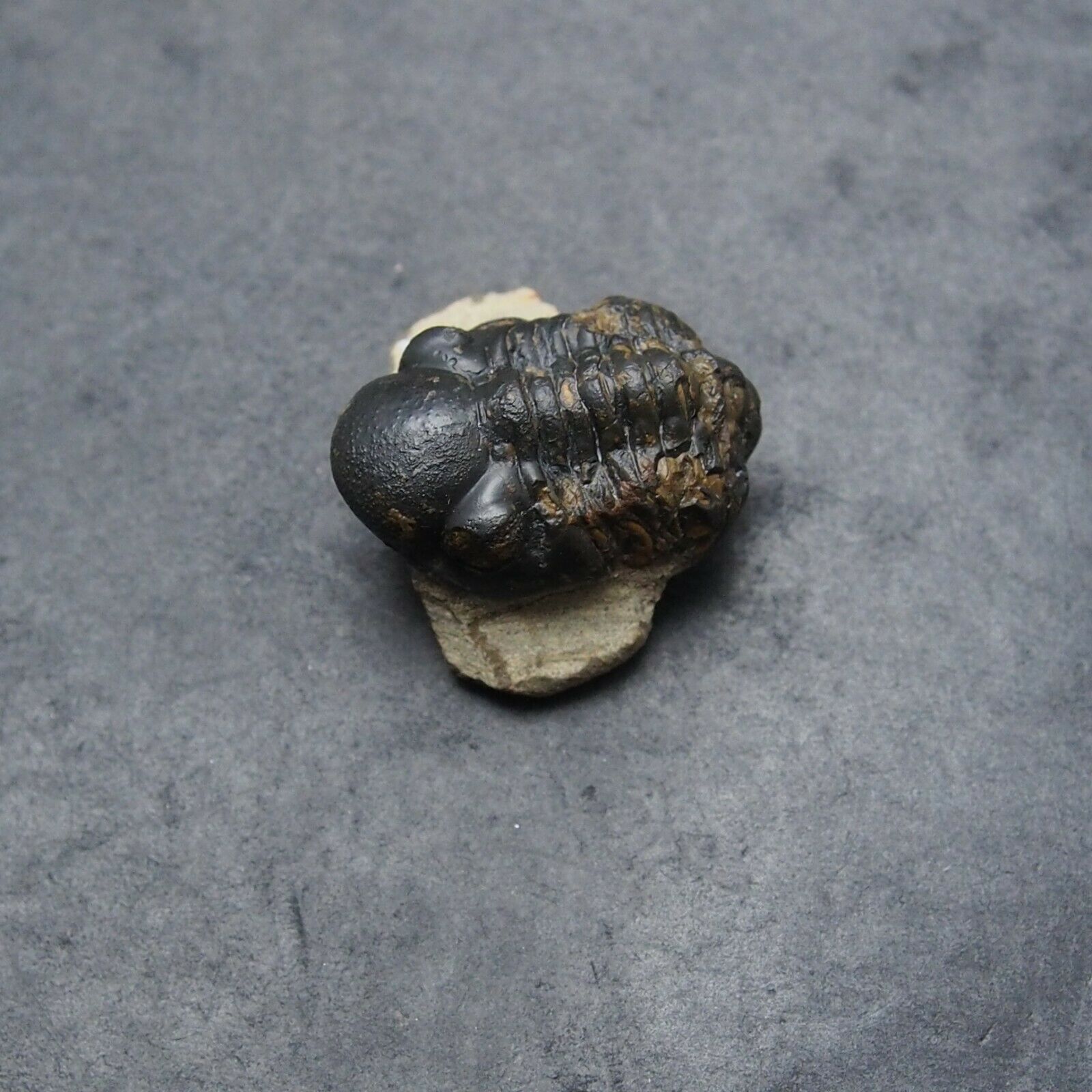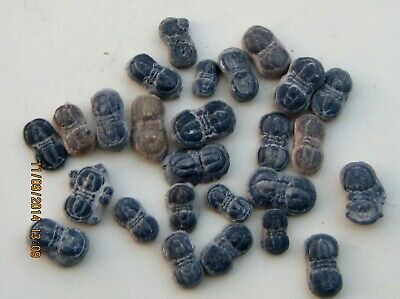-40%
Trilobite Fossil with Cast • 2.25" - 2.5" Specimen
$ 9.53
- Description
- Size Guide
Description
Trilobite with Matching Sediment ImpressionFlexicalymene sp. • Ordovician Period from Morocco
The Offering
: A wonderful example of two kinds of fossil preservation, mineral replacement and a casts. This is a nodule, containing a common trilobite from Morocco, that contains both the trilobite and an impression of the trilobite preserved in the mud that surrounded the animal when it died. You will receive the exact same specimen that you see in the photos. Thanks for looking.
Collecting Location:
These specimens are common to the Ktaoua Formation in Tazoulait, Morocco, North Africa. Tazoulait is in the southern foothills of the Anti-Atlas Mountains, located in southeastern Morocco.
Taxonomy
Trilobites belong to the arthropod group and are segmented animals like their modern day relatives, insects and crustaceans This particular trilobite is an index fossil for Ordovician rock layers in north Africa. Here is the family tree.
Kingdom:
Animalia
Phylum:
Arthropoda
Class:
Trilobita
Order:
Phacopida
Suborder:
Calymenina
Family:
Calymenidae
Genus:
Flexicalymene
Species:
ouzregui (Destombes, 1966)
More Trilobite Info:
Trilobites were one of the first fossils to zip around the planet which, back then, probably was covered with lots of water. In fact, trilobites are marine animals that lived on or near the bottom of ancient ocean floors. Because their bodies are segmented and made up of many joints and plates, they belong to the group of animals called arthropods. Trilobites are the great granddaddys of the modern day arthropods: insects, crabs, and lobsters.
They began their life in the sand or mud at the bottom of the ocean. As they grew and matured, they went through four distinct stages of development, finally winding up looking like the specimen in front of you. They characteristically swam from place to place by wiggling lots of small little hairlike structures called gills (also used to retrieve oxygen from the water) or crawled using legs called endopodites. Because they were arthropods, they had a hard exoskeleton, or casing, to protect them from enemies. When in danger they rolled into a little ball and protected themselves from their predator just like potato or pill bugs do today. As they grew, they eventually got too big for this hard shell and molted or shed the protective layer, and grew a new protective coating. Over 300 species of trilobites have been identified and can be found in numerous collecting locations throughout the world










